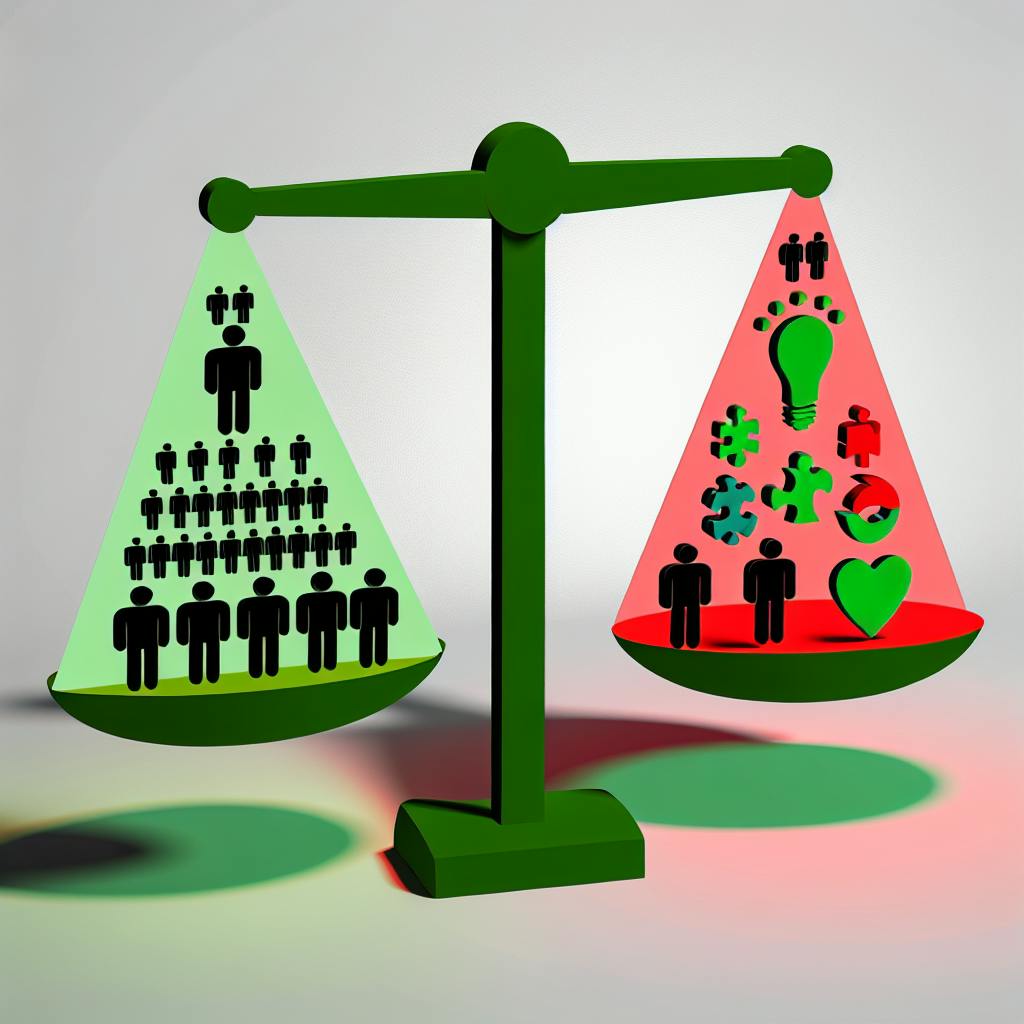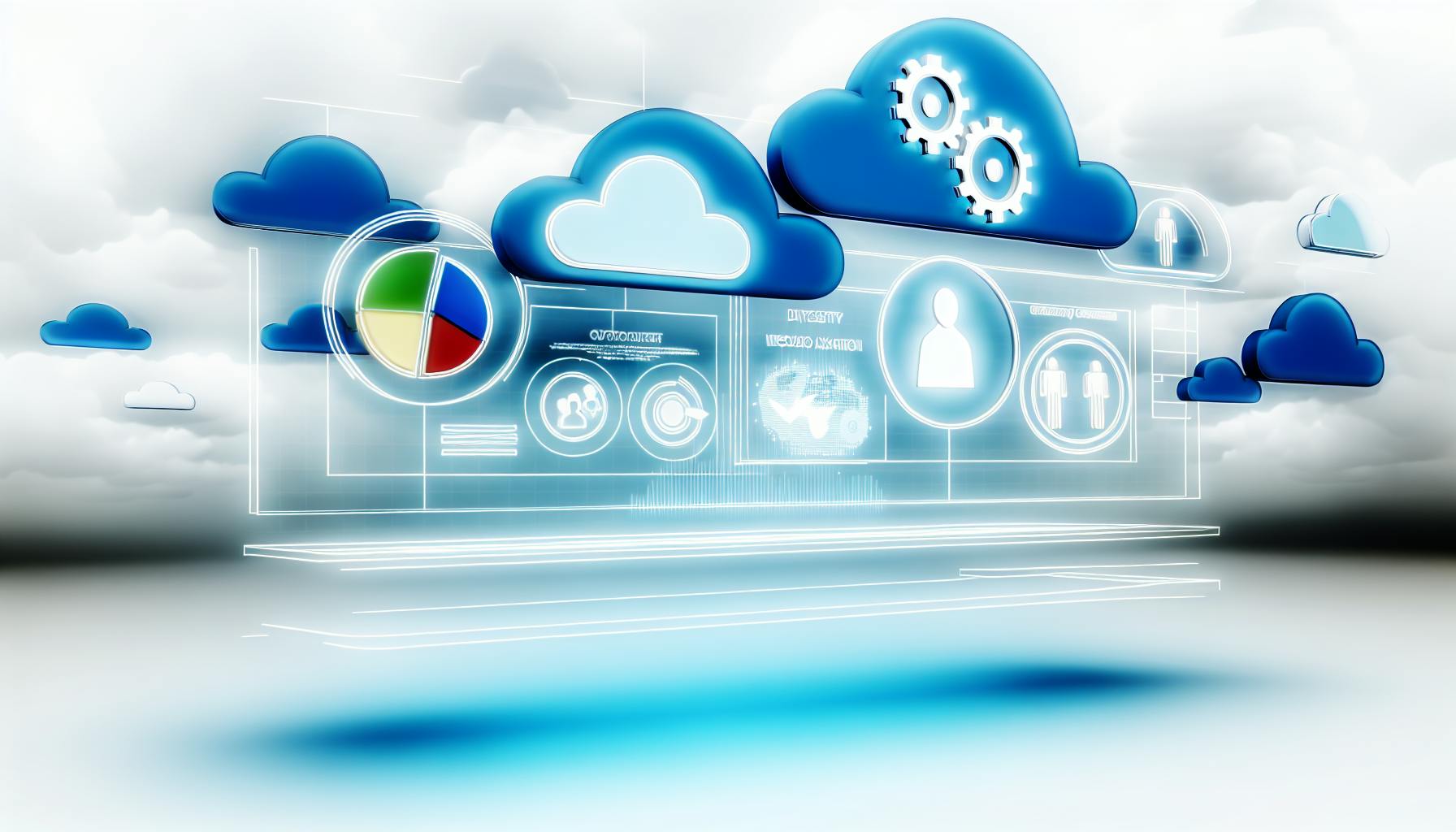Effective HR communication is crucial for employee engagement, productivity, and job satisfaction. Here are the key points to consider when selecting the right communication channels:
-
Know Your Audience: Understand your employees' needs, motivations, and preferences to choose channels that resonate with them.
-
Define Communication Objectives: Set clear goals, such as improving engagement or increasing productivity, and determine Key Performance Indicators (KPIs) to measure success.
-
Evaluate Communication Channels: Consider factors like reach, accessibility, message type, urgency, employee preferences, and integration with HR systems.
-
Consider the Type of Message: Match the channel to the message's formality, urgency, and confidentiality.
| Message Type | Suitable Channel |
|---|---|
| Company policies | Email, Company Intranet |
| Team updates | Team Collaboration Tools, Mobile Apps |
| Emergency notifications | SMS Text Messages, Push Notifications |
| Company news | Email, Company Blog |
-
Integrate with Existing HR Systems: Integrate communication channels with HR systems like HRIS, payroll, and performance management for seamless communication and streamlined processes.
-
Prioritize Mobile Accessibility: Optimize channels for mobile devices to improve engagement, productivity, and convenience for employees.
-
Foster Two-Way Communication: Encourage open communication through town halls, surveys, feedback sessions, and digital tools to build trust and make informed decisions.
-
Consider the Company Culture: Align communication channels with company values and foster a culture of open communication.
-
Provide Training and Support: Offer training, guidelines, and resources to ensure employees effectively use the chosen channels.
-
Monitor and Evaluate Effectiveness: Track key metrics like engagement and communication effectiveness scores, gather employee feedback, and refine your strategy accordingly.
By following these tips, HR professionals can create an effective communication strategy that drives business results and fosters a positive work environment.
1. Know Your Audience
To create an effective HR communication strategy, you need to understand your employees. This means knowing who they are, what they need, and what motivates them.
Assess Your Team
Consider the size and diversity of your team. This will help you choose the right communication tools. For example:
| Team Size | Tool Requirements |
|---|---|
| Small | Streamlined tools |
| Large, dispersed | Platforms with robust collaboration features |
Understand Employee Concerns
Identify the top HR-related concerns of your employees. This will help you create a tone that is genuine and relatable. By doing so, you can create a performance-based culture that encourages employees to engage with the organization's strategic plan and goals.
By knowing your audience, you can create a communication strategy that resonates with them, leading to increased employee engagement, productivity, and job satisfaction.
2. Define Communication Objectives
Defining communication objectives is a crucial step in creating an effective HR communication strategy. This involves identifying what you want to achieve through your communication efforts and how you will measure success.
Identify Your Goals
Start by identifying what you want to achieve through your communication efforts. What are your organization's goals and objectives, and how can HR communication support them? Consider the following:
- Improve employee engagement and retention
- Increase productivity and efficiency
- Enhance company culture and values
- Support change management and organizational development
Determine Key Performance Indicators (KPIs)
Once you have identified your goals, determine how you will measure success. What metrics will you use to track the effectiveness of your communication strategy? Consider the following:
| Metric | Description |
|---|---|
| Employee engagement metrics | Survey responses, participation rates |
| Communication metrics | Open rates, click-through rates, response rates |
| Business outcomes | Productivity, retention, revenue growth |
By setting clear communication objectives and determining KPIs, you can create a focused and effective HR communication strategy that supports your organization's overall goals and objectives.
3. Evaluate Communication Channels
When choosing HR communication channels, consider the following factors:
Reach and Accessibility
| Channel | Description |
|---|---|
| Widely accessible, but emails can get lost in cluttered inboxes | |
| Company Intranet/HCM | Centralized location for announcements and resources, but requires employees to actively visit the site |
| Team Collaboration Tools | Popular for real-time communication, but not all employees may have access or use them regularly |
| Mobile Apps | Effective for reaching employees directly on their devices, especially for remote or on-the-go workers |
Message Type and Urgency
| Message Type | Channel |
|---|---|
| Time-Sensitive Updates | SMS text messages, push notifications, or instant messaging |
| Detailed Policies and Procedures | Company intranet, HR portals, or internal blogs |
| Interactive Discussions | Team collaboration tools, town halls, or video conferencing |
Employee Preferences and Habits
- Survey Employees: Gather feedback on preferred communication channels and habits
- Consider Generational Differences: Younger employees may prefer modern channels like mobile apps and instant messaging, while older employees may prefer traditional methods like email or printed materials
Integration with HR Systems
- Evaluate Integration Capabilities: Choose channels that can seamlessly integrate with existing HR systems, such as payroll, performance management, and learning management systems
- Centralize Communication: Aim to centralize communication channels to streamline processes and avoid information silos
By carefully evaluating communication channels based on these factors, you can create an effective HR communication strategy that resonates with your workforce and supports your organizational goals.
4. Consider the Type of Message
When choosing the right HR communication channels, it's essential to consider the type of message you want to convey. Different messages require different channels to ensure effective communication.
Message Characteristics
The following table outlines the characteristics of different messages and the suitable communication channels:
| Message Type | Formality | Urgency | Confidentiality | Suitable Channel |
|---|---|---|---|---|
| Company policies | Formal | Low | High | Email, Company Intranet |
| Team updates | Informal | Low | Low | Team Collaboration Tools, Mobile Apps |
| Emergency notifications | Formal | High | High | SMS Text Messages, Push Notifications |
| Company news | Informal | Low | Low | Email, Company Blog |
Choosing the Right Channel
By considering the type of message, you can choose the most effective communication channel to ensure that your message is delivered efficiently and effectively.
Remember, the right channel depends on the message's formality, urgency, and confidentiality. By selecting the suitable channel, you can ensure that your message reaches the intended audience and achieves the desired outcome.
5. Integrate with Existing HR Systems
When choosing the right HR communication channels, it's essential to consider integrating with existing HR systems. This integration ensures seamless communication, enhances employee experience, and streamlines HR processes.
Benefits of Integration
Integrating HR communication channels with existing HR systems offers several benefits:
- Improved communication: Integration enables real-time and seamless communication between HR systems, ensuring that employees have accurate and up-to-date information.
- Enhanced employee experience: Integration provides a holistic view of each employee, enabling HR teams to personalize the employee experience.
- Streamlined HR processes: Integration automates HR processes, reducing manual errors and increasing efficiency.
Examples of HR Systems to Integrate
Some examples of HR systems to integrate with HR communication channels include:
| HR System | Description |
|---|---|
| HRIS (Human Resource Information System) | Enables seamless communication and data management |
| Payroll systems | Ensures accurate and timely payment of employee salaries and benefits |
| Performance management systems | Enables HR teams to track employee performance and provide personalized feedback and development opportunities |
By integrating HR communication channels with existing HR systems, organizations can create a cohesive and efficient HR ecosystem that enhances employee experience and improves overall productivity.
sbb-itb-d78b90b
6. Prioritize Mobile Accessibility
In today's digital age, mobile accessibility is crucial for effective HR communication. With most employees being "deskless" (around 80%), it's essential to ensure that HR communication channels are accessible and convenient for all employees, regardless of their location or device.
Why Mobile Accessibility Matters
Mobile accessibility offers several benefits, including:
- Improved employee engagement: Employees can access HR information and communicate with HR teams anytime, anywhere, leading to increased engagement and participation.
- Enhanced productivity: Mobile access to HR information and tools enables employees to quickly resolve HR-related issues, reducing downtime and increasing productivity.
- Increased convenience: Mobile accessibility offers employees the convenience of accessing HR information and services on-the-go, reducing the need for physical visits to HR offices or lengthy phone calls.
Best Practices for Mobile Accessibility
To ensure mobile accessibility, HR teams should:
| Best Practice | Description |
|---|---|
| Optimize HR communication channels for mobile devices | Ensure that HR communication channels, such as intranets, portals, and apps, are optimized for mobile devices, with a user-friendly interface and easy navigation. |
| Use mobile-friendly formats | Use mobile-friendly formats, such as responsive design, to ensure that HR information and tools are easily accessible on mobile devices. |
| Provide mobile access to HR tools and services | Provide mobile access to HR tools and services, such as time-off requests, benefits information, and performance management, to enable employees to manage their HR-related tasks on-the-go. |
By prioritizing mobile accessibility, HR teams can create a more inclusive, convenient, and productive work environment that caters to the diverse needs of the modern workforce.
7. Foster Two-Way Communication
Effective HR communication is a two-way process. It's not just about sharing information with employees, but also about listening to their thoughts, concerns, and ideas. Fostering two-way communication is crucial for building trust, improving employee engagement, and driving business success.
Benefits of Two-Way Communication
Two-way communication has several advantages:
| Benefit | Description |
|---|---|
| Improved employee engagement | Employees feel valued and motivated when their voices are heard. |
| Increased trust | Two-way communication helps build trust between employees and HR teams. |
| Better decision-making | By listening to employee feedback, HR teams can make informed decisions that align with the workforce's needs. |
Strategies for Fostering Two-Way Communication
To foster two-way communication, HR teams can:
| Strategy | Description |
|---|---|
| Hold regular town hall meetings | Hold regular meetings where employees can ask questions, share concerns, and provide feedback. |
| Conduct surveys and feedback sessions | Conduct regular surveys and feedback sessions to gather employee input and concerns. |
| Establish an open-door policy | Create an environment where employees feel comfortable approaching HR teams with questions, concerns, or ideas. |
| Use digital communication tools | Use digital tools, such as intranets, portals, or apps, to facilitate two-way communication and provide employees with a platform to share their thoughts and ideas. |
By fostering two-way communication, HR teams can create a more inclusive, engaged, and productive work environment that drives business success.
8. Consider the Company Culture
When choosing the right HR communication channels, it's essential to consider the company culture. The culture of your organization plays a significant role in determining the most effective communication channels.
Align Communication Channels with Company Values
Your company culture is reflected in your values, mission, and vision. Ensure that your communication channels align with these values.
| Company Value | Communication Channel |
|---|---|
| Transparency | Open and collaborative channels like intranets or digital signage |
| Innovation | Modern and interactive channels like video conferencing or social media |
Foster a Culture of Open Communication
A company culture that encourages open communication can help foster trust, engagement, and productivity. By choosing communication channels that promote open communication, you can create a culture where employees feel comfortable sharing their thoughts, ideas, and concerns.
| Open Communication Strategy | Description |
|---|---|
| Regular town hall meetings | Encourage employees to ask questions and share concerns |
| Anonymous feedback channels | Allow employees to provide feedback without fear of retribution |
| Open-door policies | Create an environment where employees feel comfortable approaching HR teams with questions or concerns |
By considering the company culture when choosing HR communication channels, you can create a more inclusive, engaged, and productive work environment that drives business success.
9. Provide Training and Support
When choosing the right HR communication channels, it's essential to provide training and support to ensure that employees understand how to effectively use these channels. This is particularly important when introducing new communication tools or platforms.
Use Technology to Enhance Training
Technology can significantly improve learning outcomes and streamline the training process. Consider using tools like Learning Management Systems (LMS), video-based learning, and mobile learning apps.
Clear Guidelines and Resources
Provide employees with clear guidelines and resources on how to use the chosen communication channels. This can include user manuals, tutorials, and FAQs.
Encourage Feedback and Support
Encourage employees to provide feedback and suggestions on the communication channels and offer support when needed. This can be done through regular surveys, focus groups, or one-on-one meetings.
| Training Strategy | Description |
|---|---|
| Technology-based training | Use tools like LMS, video-based learning, and mobile learning apps to enhance training |
| Clear guidelines and resources | Provide user manuals, tutorials, and FAQs to support employees |
| Feedback and support | Encourage feedback and offer support through surveys, focus groups, or one-on-one meetings |
By providing training and support, you can ensure that employees are equipped to effectively use the chosen communication channels, leading to improved communication and collaboration within the organization.
10. Monitor and Evaluate Effectiveness
To ensure your HR communication channels are working, you need to track their performance and make adjustments as needed. This involves monitoring key metrics and gathering feedback from employees.
Track Key Metrics
Identify the metrics that matter most to your organization and track them regularly. This could include:
| Metric | Description |
|---|---|
| Employee Engagement Score | Measures employee engagement and satisfaction with communication channels |
| Communication Effectiveness Score | Measures the effectiveness of communication channels in achieving business objectives |
| Channel Performance | Measures the performance of each communication channel |
| Business Impact Metrics | Measures the impact of communication channels on business outcomes |
Gather Feedback
Regularly gather feedback from employees to understand what's working and what's not. This can be done through:
- Surveys
- Focus groups
- One-on-one meetings
Use this feedback to refine your communication strategy and make data-driven decisions.
By monitoring and evaluating the effectiveness of your HR communication channels, you can ensure your messages are resonating with your audience and driving business results.
Conclusion
Choosing the right HR communication channels is vital for employee engagement, productivity, and job satisfaction. By following these 10 practical tips, HR executives can select the most suitable communication channels that work well with their HR technology stack and promote effective communication throughout the organization.
Key Takeaways
- Effective HR communication is crucial for achieving organizational goals and objectives.
- Choosing the right communication channels can improve employee engagement, productivity, and job satisfaction.
- A well-planned communication strategy is essential for driving business results and fostering a positive work environment.
By implementing these 10 tips, HR professionals can create a communication strategy that resonates with their audience, drives business results, and fosters a positive work environment.


